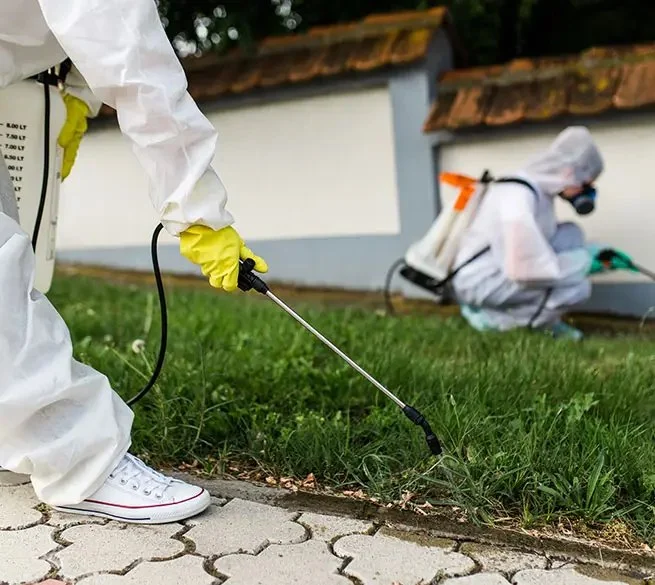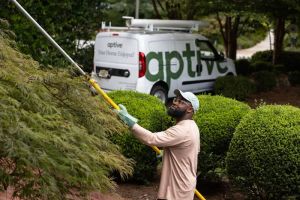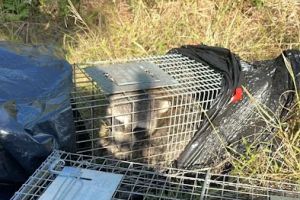
1. What Are Insect Growth Regulators (IGRs)?
Insect Growth Regulators (IGRs) are a class of chemicals used in pest control that target the development cycle of insects. Unlike traditional pesticides, IGRs do not kill insects directly; instead, they interfere with their growth and development. By disrupting the molting process, IGRs prevent insects from maturing into adults or reproducing, effectively reducing pest populations over time.
IGRs are particularly useful for controlling pests like fleas, termites, cockroaches, and flies. They offer a more targeted approach to pest management and are generally less toxic to humans, pets, and beneficial insects than conventional pesticides. In this article, we’ll explore how to use IGRs effectively and the best practices for pest control with these products.

Aptive Pest Control
MechanicsburgCumberland CountyPennsylvania
5020 Ritter Rd # 207, Mechanicsburg, PA 17055, USA
2. How IGRs Work in Pest Control
IGRs work by mimicking or interfering with hormones that insects rely on for growth and development. When an insect encounters an IGR, it is unable to molt or develop into its next life stage, ultimately leading to its death or inability to reproduce. This process is slow and gradual, making IGRs particularly effective for long-term pest control.
2.1. Types of IGRs
There are different types of IGRs used for various types of pests. Some of the most common types include:
- Juvenile Hormone Analogs: These IGRs mimic juvenile hormones and prevent insects from maturing into adults. They are commonly used to control flies, mosquitoes, and fleas.
- Chitin Synthesis Inhibitors: These IGRs block the production of chitin, a key component of the insect exoskeleton, preventing proper molting. They are effective against cockroaches and termites.
- Molting Disruptors: These IGRs interfere with the molting process by disrupting the insect's ability to shed its exoskeleton. They are often used for controlling fleas and ticks.
2.2. Benefits of Using IGRs
IGRs offer several advantages over traditional pesticides, including:
- Targeted Pest Control: IGRs are highly specific in their action, affecting only pests that rely on hormonal processes for growth. This makes them safer for humans, pets, and non-target organisms.
- Reduced Environmental Impact: Since IGRs are less toxic to non-pest species, they have a lower environmental impact compared to conventional pesticides.
- Long-Term Effectiveness: IGRs disrupt the insect lifecycle, making them an effective solution for long-term pest management. Once the pest population is reduced, it can take some time for new infestations to occur.
3. How to Use IGRs Effectively for Pest Control
To maximize the effectiveness of IGRs, it’s important to follow the correct application methods and best practices. Here’s how you can use IGRs effectively to control pests:
3.1. Select the Right IGR for the Pest
Different pests require different types of IGRs. Before using an IGR, identify the type of pest you are dealing with and choose the appropriate product. For example, juvenile hormone analogs are effective against fleas, while chitin synthesis inhibitors are better suited for cockroaches and termites. Make sure to read the label and follow the manufacturer’s recommendations to ensure you’re using the right IGR for the job.
3.2. Apply IGRs at the Right Time
IGRs are most effective when applied at the right stage of the pest’s life cycle. Since IGRs interfere with molting and development, it’s important to apply them when pests are actively growing. For example, using an IGR for fleas should coincide with the flea larvae stage, as this is when they are most vulnerable. In some cases, repeated applications may be necessary to address various stages of the pest lifecycle.
3.3. Use IGRs in Combination with Other Pest Control Methods
IGRs work best when used as part of an integrated pest management (IPM) plan. While IGRs prevent pests from growing and reproducing, they may not kill adult pests immediately. For faster results, combine IGRs with other pest control methods, such as vacuuming, cleaning, and using physical barriers like traps or baits. This combination will help you address both the current pest problem and future infestations.
3.4. Follow Safety Guidelines and Proper Handling
Although IGRs are generally safer than traditional pesticides, it’s still important to follow safety guidelines when handling and applying them. Wear gloves, avoid inhaling fumes, and keep IGRs out of reach of children and pets. Always read and follow the instructions provided on the product label to ensure safe and effective use.
4. Case Study: Effective Use of IGRs for Flea Control
Sarah, a homeowner in Austin, Texas, was dealing with a flea infestation in her home. She tried traditional flea treatments, but the problem persisted. After consulting with a pest control expert, she learned about Insect Growth Regulators (IGRs) and decided to give them a try. Sarah applied an IGR treatment specifically designed for fleas, following the recommended schedule for both her pets and her home. Within a few weeks, she noticed a significant reduction in the flea population. By continuing to use the IGR and implementing regular vacuuming, Sarah was able to eliminate the flea infestation and prevent future outbreaks.
5. Common Mistakes to Avoid When Using IGRs
To ensure the best results, avoid these common mistakes when using IGRs:
- Using the Wrong IGR: Not all IGRs are suitable for every pest. Be sure to choose the right product for the pest you’re trying to control.
- Applying IGRs at the Wrong Time: Apply IGRs during the pests' active growth stages for maximum effectiveness. Applying them when the pests are dormant can reduce their impact.
- Relying Solely on IGRs: While IGRs are effective, they work best when combined with other pest control methods as part of an integrated strategy.
6. Conclusion
Insect Growth Regulators (IGRs) are a powerful tool in the fight against pests. By understanding how IGRs work, selecting the right products, and following best practices, you can effectively reduce pest populations without the use of harsh chemicals. Whether you’re dealing with fleas, cockroaches, or other pests, IGRs offer a long-term solution for controlling infestations and preventing future problems. For more information on IGRs and other pest control solutions, visit PestControlHub for expert recommendations and products tailored to your needs.








 Wildlife Resolutions4.0 (443 reviews)
Wildlife Resolutions4.0 (443 reviews) Pest Marshals of Toledo5.0 (2 reviews)
Pest Marshals of Toledo5.0 (2 reviews) LS Rodent Proofing & Pest Control Service5.0 (4 reviews)
LS Rodent Proofing & Pest Control Service5.0 (4 reviews) Best Termite & Pest Control4.0 (16 reviews)
Best Termite & Pest Control4.0 (16 reviews) Varment Guard Wildlife Services5.0 (28 reviews)
Varment Guard Wildlife Services5.0 (28 reviews) Pestban Inc4.0 (394 reviews)
Pestban Inc4.0 (394 reviews) How to Use Monitors to Detect Pest Entry: A Comprehensive Guide
How to Use Monitors to Detect Pest Entry: A Comprehensive Guide How to Predict Which Pests Will Invade Next – Smart Pest Forecasting for the U.S.
How to Predict Which Pests Will Invade Next – Smart Pest Forecasting for the U.S. How to Conduct a Pest Risk Assessment at Home – Expert Guide
How to Conduct a Pest Risk Assessment at Home – Expert Guide How to Block Pest Entry Around Deck Joists: Effective Solutions
How to Block Pest Entry Around Deck Joists: Effective Solutions How to Safely Use Fumigation Methods: A Comprehensive Guide for Homeowners
How to Safely Use Fumigation Methods: A Comprehensive Guide for Homeowners Why Pests Are More Active After Rain: Understanding the Link Between Weather and Pest Behavior
Why Pests Are More Active After Rain: Understanding the Link Between Weather and Pest Behavior